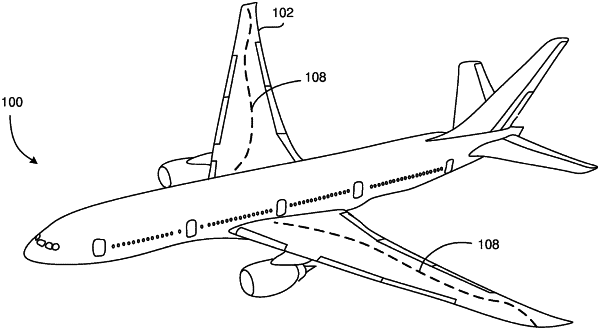| CPC B64C 23/04 (2013.01) [B64C 23/06 (2013.01)] | 20 Claims |

|
1. A method of enhancing operation of an aircraft, the method comprising:
moving a wing having a fixed-location trip device along a span of the wing through an airflow such that air passing over a wing surface creates a laminar boundary layer; and
creating a turbulent boundary layer when the airflow is downstream of the fixed-location trip device, wherein the laminar boundary layer extends for a first length and the turbulent boundary layer extends for a second length, wherein the fixed-location trip device extends spanwise along an upper surface of the wing at a position that is just aft of a most downstream position for transitioning from a laminar to turbulent flow under a plurality of cruise conditions without the trip device, such that the trip device's position enables laminar flow for the first length to increase aerodynamic efficiency and enables turbulent flow for the second length to decrease loads on the wing, thereby providing a fixed aft limit on a transition from laminar boundary layer to turbulent boundary layer,
wherein the trip device's position is determined by:
predicting a plurality of target transition locations under a plurality of design conditions including the plurality of cruise conditions without the trip device, wherein each target transition location is a location where airflow transitions from a laminar boundary layer to a turbulent boundary layer, and
identifying the most downstream target transition location from the plurality of target transition locations as the position of the trip device, so as to limit downstream movement of transitions from a laminar boundary layer to a turbulent boundary layer under non-cruise conditions.
|